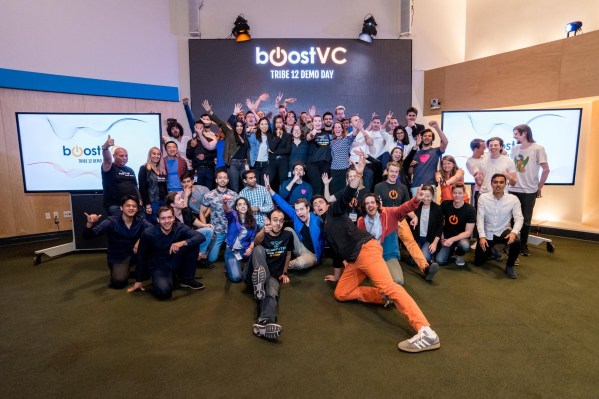Adam Draper, the son of that Draper, is changing things up a bit at his accelerator.
Boost VC has been living life on the fringe of Bay Area accelerators, chasing trends like VR and crypto (and sometimes a combo of the two) hard while courting outliers, including a “robot fish platform” and a “cold metal fusion printer.”
While Boost VC’s investments have varied in feasibility, Draper says most of them fit into his particular vision of emerging tech that he calls “sci-fi tech,” something he says is more about finding technologies that give humans “superpowers,” a term he seems to be giving a pretty broad definition with a sci-fi portfolio that includes a jetpack startup and a hotel booking site.
Canvassing frothy sectors hasn’t always been a particularly strong recipe for sustained success; both VR/AR and blockchain startups have endured bear markets in the past couple of years. Draper encourages his bets to stay lean and low-profile; the accelerator’s official slogan was, at one point, “be the cockroach.”
Adam Draper isn’t planning to shift away from longshots, but he is turning the seven-year-old Boost VC into a more codified accelerator in an aim to provide a more compelling pitch to savvy entrepreneurs that need more money early on.
The headline changes are that Boost VC is halving the number of companies in its accelerator classes to 7-10 companies, and is increasing the checks that it’s writing to $500K while taking a bigger slice of its portfolio startups (15%). The accelerator is still giving the same perks and is hoping to up the programming to make the smaller group more close-knit.
The numbers may be shifting, but the biggest change is that there are hard numbers to begin with. Boost VC has at times looked like a club for Draper’s early angel investments, largely because the check sizes and valuations varied so heavily — investments ranged from $50K to $500K.
“Standardizing everything just makes it all way, way better,” Draper told TechCrunch. “YC is awesome, and that’s why I forked their model. I think programming-based VC is the best model in venture capital.”
With this change toward deal uniformity, Draper may be stripping some of the volume, but also focusing more on quality, rather than breadth. This is undoubtedly a necessary step as accelerator behemoth Y Combinator continues to surge in size, now betting on nearly 400 companies per year while sucking up a pretty sizable pool of accelerator applicants from other institutions.
Last year, Draper announced the close of Boost’s third fund, which clocked in at $38.6 million. The team is about to take applications for its 13th “tribe” of accelerator startups.
“If you are a consumer or enterprise-based business, YC is fantastic and they have repeated success. If you are in this ‘sci-fi’ category than I think specialization is very important and it’s also slightly more expensive,” he says.
A major question will be whether the higher valuations and check sizes will shift Boost away from some of the riskier and stranger “Hogwarts-inspired” VR and crypto investments that it’s been making. At the same time, 15% is a pretty sizable portion of equity for founders to offload so early in their life cycle, though Draper believes plenty of teams will be interested in landing a $500K investment.
“Boost isn’t going to be for everyone, and I’m okay with that,” Draper says.
